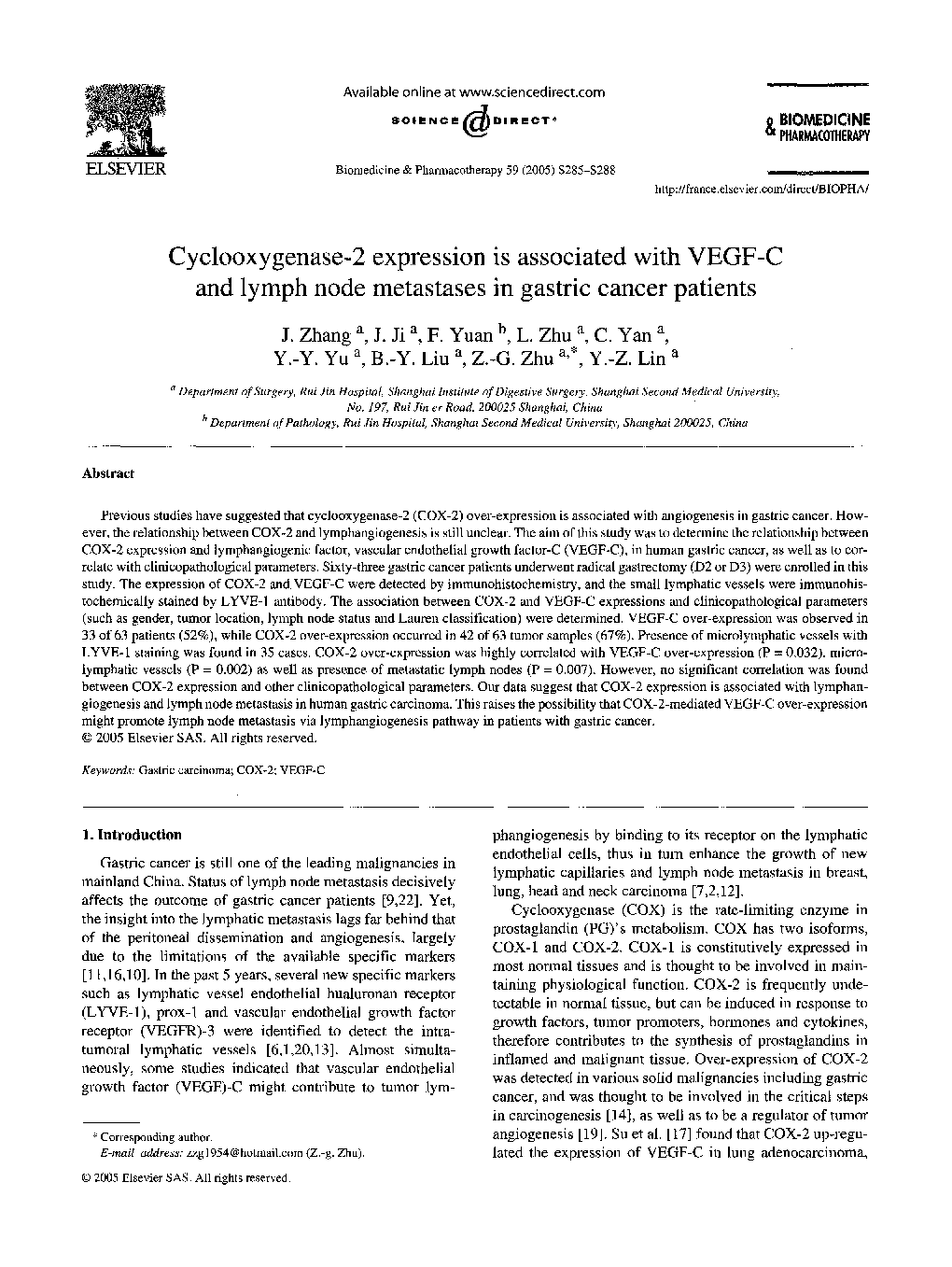| Article ID | Journal | Published Year | Pages | File Type |
|---|---|---|---|---|
| 9004604 | Biomedicine & Pharmacotherapy | 2005 | 4 Pages |
Abstract
Previous studies have suggested that cyclooxygenase-2 (COX-2) over-expression is associated with angiogenesis in gastric cancer. However, the relationship between COX-2 and lymphangiogenesis is still unclear. The aim of this study was to determine the relationship between COX-2 expression and lymphangiogenic factor, vascular endothelial growth factor-C (VEGF-C), in human gastric cancer, as well as to correlate with clinicopathological parameters. Sixty-three gastric cancer patients underwent radical gastrectomy (D2 or D3) were enrolled in this study. The expression of COX-2 and VEGF-C were detected by immunohistochemistry, and the small lymphatic vessels were immunohistochemically stained by LYVE-1 antibody. The association between COX-2 and VEGF-C expressions and clinicopathological parameters (such as gender, tumor location, lymph node status and Lauren classification) were determined. VEGF-C over-expression was observed in 33 of 63 patients (52%), while COX-2 over-expression occurred in 42 of 63 tumor samples (67%). Presence of microlymphatic vessels with LYVE-1 staining was found in 35 cases. COX-2 over-expression was highly correlated with VEGF-C over-expression (P = 0.032), microlymphatic vessels (P = 0.002) as well as presence of metastatic lymph nodes (P = 0.007). However, no significant correlation was found between COX-2 expression and other clinicopathological parameters. Our data suggest that COX-2 expression is associated with lymphangiogenesis and lymph node metastasis in human gastric carcinoma. This raises the possibility that COX-2-mediated VEGF-C over-expression might promote lymph node metastasis via lymphangiogenesis pathway in patients with gastric cancer.
Keywords
Related Topics
Health Sciences
Medicine and Dentistry
Oncology
Authors
J. Zhang, J. Ji, F. Yuan, L. Zhu, C. Yan, Y.-Y. Yu, B.-Y. Liu, Z.-G. Zhu, Y.-Z. Lin,
